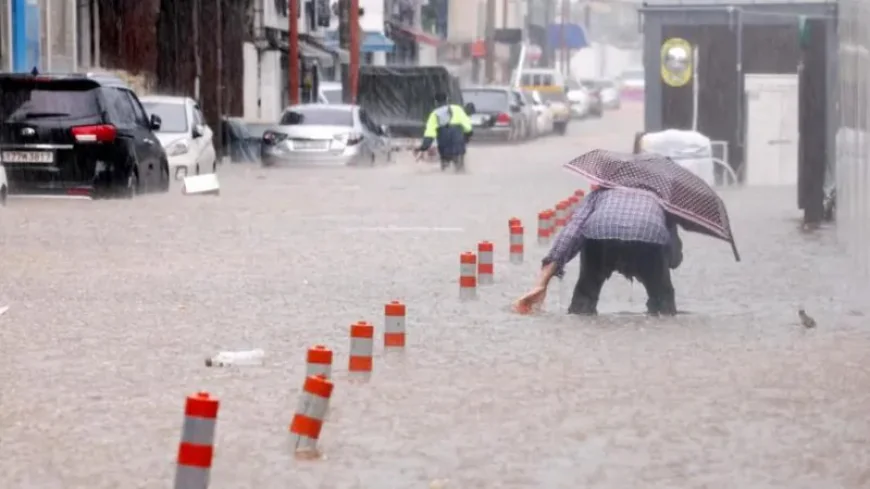South Korea Floods: Four Dead, Over 1,300 Evacuated as Record-Breaking Rainfall Triggers National Alert
Severe floods in South Korea have killed 4 and displaced over 1,300 residents after record-breaking rainfall in Seosan and Gwangju. Get the latest updates and safety alerts here.

South Korea is grappling with a deadly weather emergency as record-breaking torrential rains have claimed four lives and forced the evacuation of more than 1,300 people across the country. The unprecedented downpours have triggered widespread flooding, infrastructure damage, and a nationwide disaster alert.
The Korea Meteorological Administration (KMA) has described the extreme rainfall event as “once-in-a-century,” with the west coast city of Seosan receiving more than 400mm (15.7 inches) of rain within just 12 hours. Similarly, Gwangju recorded 426mm on Thursday alone, marking one of the heaviest downpours in recent memory.
Fatalities and Damage Mount Amid South Korea’s Flood Emergency
Among the four confirmed fatalities:
Two elderly men in their 80s drowned, with one reportedly attempting to drain floodwaters from his basement.
A third man died when a retaining wall collapsed onto his car. Just before the incident, he had phoned his wife to say the vehicle was “being swept away.”
The fourth victim suffered a fatal cardiac arrest linked to the extreme weather.
In addition to the fatalities, multiple injuries have been reported, including cases of hypothermia and leg injuries sustained during emergency evacuations.
Gwangju Café Owner: “I’ve Never Seen a Flood Here Before”
Residents and business owners across the affected regions are reeling from the damage. Kim Ha-min, a 26-year-old café owner in Gwangju, said her shop was completely flooded.
“I drained the water, but the smell from the sewers is so bad I can’t reopen,” she told reporters. “This neighborhood doesn’t even have a nearby stream. I never imagined a flood could happen here.”
Infrastructure Overwhelmed as South Korea Raises Disaster Alert to Highest Level
The South Korean government has raised its weather-related disaster alert to the highest tier, mobilizing emergency services to assist displaced residents and assess structural damage. Emergency shelters have been set up across the most affected provinces.
Authorities have urged citizens to avoid riverbanks, steep slopes, and underground spaces due to the high risk of flash floods and landslides. Residents are being advised to remain indoors and follow evacuation orders promptly.
Social Media Flooded with Footage of Submerged Cities
Videos circulating on social media show vehicles floating through flooded streets, homes submerged up to their rooftops, and residents wading through waist-deep water. In one widely shared post, a resident wrote:
“Everything is covered by water except the roof of my house.”
Why Is It Raining So Much in South Korea? Experts Explain
Meteorologists say the disaster is being driven by a rare atmospheric phenomenon: dry air from the northwest clashing with hot, humid air from the south, forming massive, slow-moving rain clouds that continue to drench the country.
Despite the ongoing threat, forecasts suggest a dramatic weather shift in the coming days. Temperatures are expected to rise, with the possibility of a heatwave next week, compounding challenges for emergency services and evacuees.


